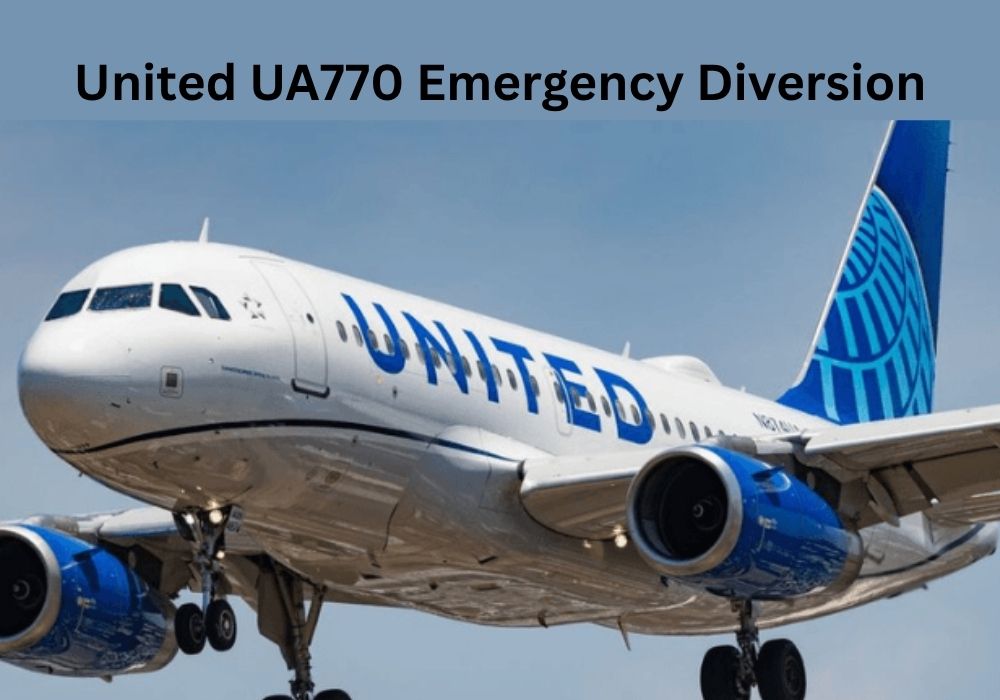UA770’s emergency diversion in plain language
On May 27, 2025, United Airlines flight UA770, operating a Boeing 787-9 (registration N26902), declared a general in-flight emergency while en route from Barcelona (BCN) to Chicago O’Hare (ORD) and diverted to London Heathrow (LHR). The crew squawked 7700 to alert air traffic control and landed safely at Heathrow with no reported injuries.
The diversion made headlines because squawking 7700 signals a general emergency — it’s the highest alert a crew can set on their transponder and usually triggers priority handling by ground controllers. In UA770’s case, the pilots prioritized passenger safety and chose the nearest suitable diversion airport.
Airlines and airports treat such diversions seriously but routinely: crews train for them, procedures exist to manage passengers, and regulators investigate to find root causes. The focus is always on safe handling rather than sensational detail.
Timeline & flight details (minute-by-minute clarity)
UA770 departed Barcelona and was about 1–2 hours into its transatlantic leg when the flight crew detected an issue significant enough to declare an emergency and request diversion to Heathrow. The aircraft landed at LHR (Runway 27R) and later docked at gate B44.
According to multiple aviation trackers and news reports, the aircraft type listed was a Boeing 787-9 Dreamliner; the airline indicated the diversion was precautionary while technical teams assessed the aircraft on the ground. Passengers were reported safe and disembarked normally.
After landing, United crews—along with airport engineers—inspected the systems and arranged onward travel options or accommodation for affected customers. Airlines typically handle re-routing, hoteling, and customer care after diversions; UA indicated a temporary stopover was planned while the issue was evaluated.
What “squawk 7700” actually means (and why pilots use it)
When a pilot sets transponder code 7700, ATC and surrounding radar facilities immediately know the aircraft has declared a general emergency. It’s a standardized, global signal used alongside verbal mayday/pan calls when urgent help or priority is needed.
A 7700 squawk doesn’t specify the problem — it’s intentionally broad. Reasons range from pressurization problems, engine or systems anomalies, to onboard medical emergencies. The code’s role is to buy priority handling: quicker routing, immediate clearances, and coordination of emergency services on landing.
From an operational standpoint, crews follow checklists (trouble-shoot, stabilize, decide diversion) and then coordinate with the airline’s operations control and ATC. The decision to divert factors in nearest suitable fields, weather, runway length, and maintenance capability.
Passenger experience & airline response (what travellers felt and received)
Onboard reports for UA770 describe calm, professional crew communication. In many modern diversions, crew briefings, seat-belt reminders, and clear instructions are the main calming influences — passengers often report appreciation for steady leadership up front. Airlines train crews specifically for passenger communication during incidents.
Once on the ground, airlines typically arrange ground transport, hotels, re-accommodation or rebooking, and offer customer service compensation per their policies. United and other carriers usually post updates on social channels and work with airport teams to assist disembarking and onward travel.
If you were on board or booked on UA770: keep receipts, photograph any relevant notifications, and reach out to United’s customer care with your booking reference — documentation helps with claims for hotels, meals, or alternate flights. Airlines often issue goodwill gestures (vouchers, miles) once the facts are verified.
Technical context: ETOPS, diversion rules, and safety assurances
Transatlantic operations like Barcelona→Chicago fall under extended-range rules (ETOPS). These regulations dictate how far an aircraft may be from suitable diversion airports and require operator approvals, redundancy checks, and strict maintenance standards. That framework is why diversions are safe and well-planned rather than panicked improvisations.
Regulatory guidance (FAA/ICAO) and airline operations manuals govern when and how crews declare emergencies and divert. The priority is minimizing risk: if a system degrades, the safest option is often to land at the nearest qualified airport rather than press on to destination. That’s exactly what happened with UA770.
Investigations after such events are routine. Maintenance teams, airline safety, and sometimes aviation authorities review flight data and maintenance records to determine root cause and corrective actions. Passengers should expect follow-ups, and airlines publish outcomes when there’s a broader safety lesson.
Practical tips if you’re flying after a diversion story like UA770
• Keep digital and paper copies of travel documents and booking references. Airlines need them for rebooking and reimbursement.
• Photograph any onboard announcements or crew briefings if you think you’ll need proof later.
• Sign up for your airline’s notifications — real-time alerts and contact options speed up recovery.
These small efforts save time and headache if a last-minute diversion, delay, or cancellation affects your trip. Airline customer portals and airport desks are the fastest route to solutions.
Final thoughts: safety first, and why diversions are a positive sign
Diversions like UA770’s are not evidence of lax safety — they’re evidence of layered safety thinking: detect a problem early, prioritize people, and land where experts can inspect and fix the aircraft. That “better safe than sorry” mindset keeps commercial aviation among the world’s safest transport modes.
As a writer who follows aviation safety and operations closely (analyzing dozens of incident reports and official guidance), I find these events reassuring for the system: emergency choices are made deliberately, trained crews execute plans calmly, and regulators require follow-up so everyone learns. That said, I also recommend passengers keep expectations flexible during any long-haul travel — disruptions happen, and preparation helps.
READ ALSO:
Delta Flight DL275 Diverted LAX: When Technology Meets Crisis Management
